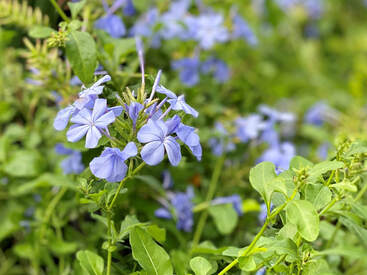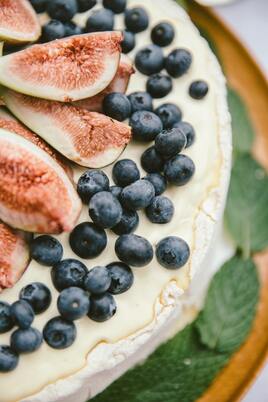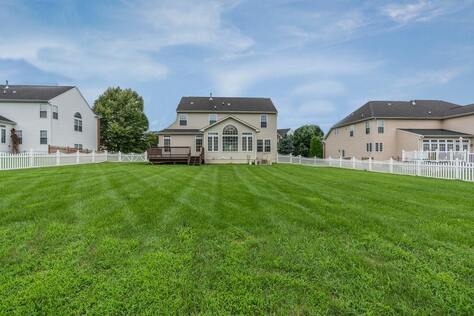Summer Maintenance and Fruits!  Lawns: Lawns should be fully greened up by now. Refer back to the May calendar for maintenance recommendations on fertilizer and mowing heights. If you are seeing unhealthy patches in your lawn, there are a couple of things that you can do. First, submit a soil sample from just that area. For the most accurate fertilizer and lime recommendations your sample should be submitted to Clemson’s Agricultural Services Laboratory. You can take your sample to your county Extension office or mail it directly to the lab. In the results that you are sent from the lab will be specific fertilizer and possibly lime recommendations to correct deficiencies of your soil. For more information on taking a soil sample please visit: https://hgic.clemson.edu/factsheet/soil-testing/ If you are concerned that a disease, insect or nematodes may be responsible for the decline of your lawn, you can also submit a plant sample to the Clemson Plant Problem Clinic. Cut out a 6 inch square from the area of affected lawn preferably where the unhealthy grass meets up with the healthy looking grass. The sample should contain some of both. Be sure to include at least 1 inch of roots and soil. Place in a sturdy, plastic bag and submit the sample as soon as possible. Do not let the sample dry out or leave it sitting in a hot place like your car. Below are links to the guidelines and the submission form for a plant problem sample. Read the guidelines thoroughly and fill out as much of the form as possible. https://www.clemson.edu/public/regulatory/plant-problem/pdfs/plantdiagnosticsamplecollection_guidelines.pdf https://www.clemson.edu/public/regulatory/plant-problem/pdfs/form-plant-problem-2018-pdf.pdf It should take 7-10 days to get results. Part of the process involves trying to culture out a possible pathogen which may take a week. Results should give you ample information on correcting the problem. The Plant Problem Clinic can help diagnose problems with any plants in your landscape so keep that in mind as the summer season progresses. Annuals and Perennials: Summer annuals should be in full bloom by now. Be sure to keep them healthy and blooming for the whole season with adequate water and fertilizer. To avoid diseases drip irrigation or soaker hoses work best. If using overhead irrigation water early in the morning. Hopefully you have had your soil tested in the past three years. If not, consider doing so especially if your plants are not performing up to expectations. Perennials need adequate nutrients to be sure they bloom this year and come back strong the next year. Otherwise use a fertilizer applied in multiple doses over the blooming season. Use a slow release fertilizer such as a 12-6-6, 12-4-8 or 16-4-8 at the rate of 1 to 2 pounds per 100 ft² and repeat every four to six weeks. You can also use one of the Espoma organic fertilizers at a rate of 4-7 pounds per 100 ft². Keep annuals and perennials deadheaded to keep plants looking fresh and healthy and to encourage more flowers. Many flowers are susceptible to botrytis petal blight, so be sure to provide good air circulation through proper plant spacing. Water plants early in the morning so they will dry out quickly in morning sunlight. Remove dead flowers from the area-bag them and throw them away if they look infected.  Blueberries and Figs: Two of the easiest fruits to grow in the home garden are the blueberry and the fig. Hopefully you already have some planted in your landscape but if not, you can plant some now. Both may start to fruit this month although it may be July before the fruit ripens. For blueberries you will get the best crop if you have two varieties to cross-pollinate each other. With figs you only need one tree unless you wish to try multiple varieties. Common Rabbiteye blueberry varieties grown successfully for years in the southeast are Brightwell, Climax, Premier, Powderblue and Tifblue. Two of my favorites for flavor and firmness and that will successfully cross-pollinate each other are Vernon and Alapaha. Blueberries are endemic to the sandy soils of the southeast so be careful if your home garden is in some the clay areas of Charleston County. You must provide good drainage for your plants. Blueberries prefer a pH of 5.5 so be sure to have the soil tested in the area where you plan to grow them to be sure the pH is not too low or high. If you add any type of compost, be certain it has not had lime added to it. Also bear in mind that blueberry plants will perform best over the years to come if they are not allowed to fruit for their first two years. Those first two years the plant’s energy should be spent on developing roots and shoots. For more information on growing blueberries, please visit: https://hgic.clemson.edu/factsheet/blueberry/ The most common fig found in the southeast is the Brown Turkey. It may produce multiple crops depending upon the weather. Bear in mind that without regular pruning these trees can grow 15-25 feet in height and width. Prune enough that you can reach the fruit from the ground. If you want lots of figs give them plenty of room in full sunlight. Flavorful fruit develops best with lots of light and good air circulation. Be sure to give adequate water during dry spells but do not overwater especially as fruit is ripening. Unfortunately, heavy rains as fruit is ripening may cause cracking and lessen the flavor. For more information on growing figs please visit: https://hgic.clemson.edu/factsheet/fig/ Comments are closed.
|
Categories
All
Archives
June 2024
|


 RSS Feed
RSS Feed



